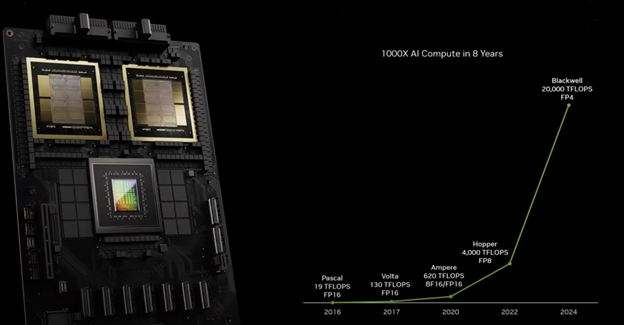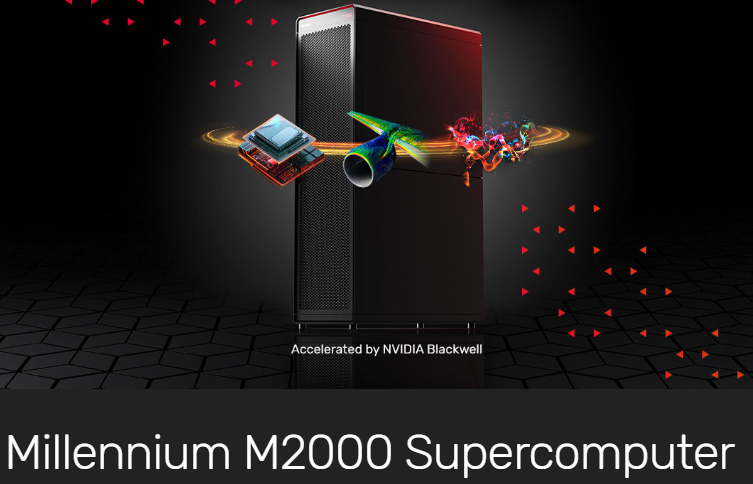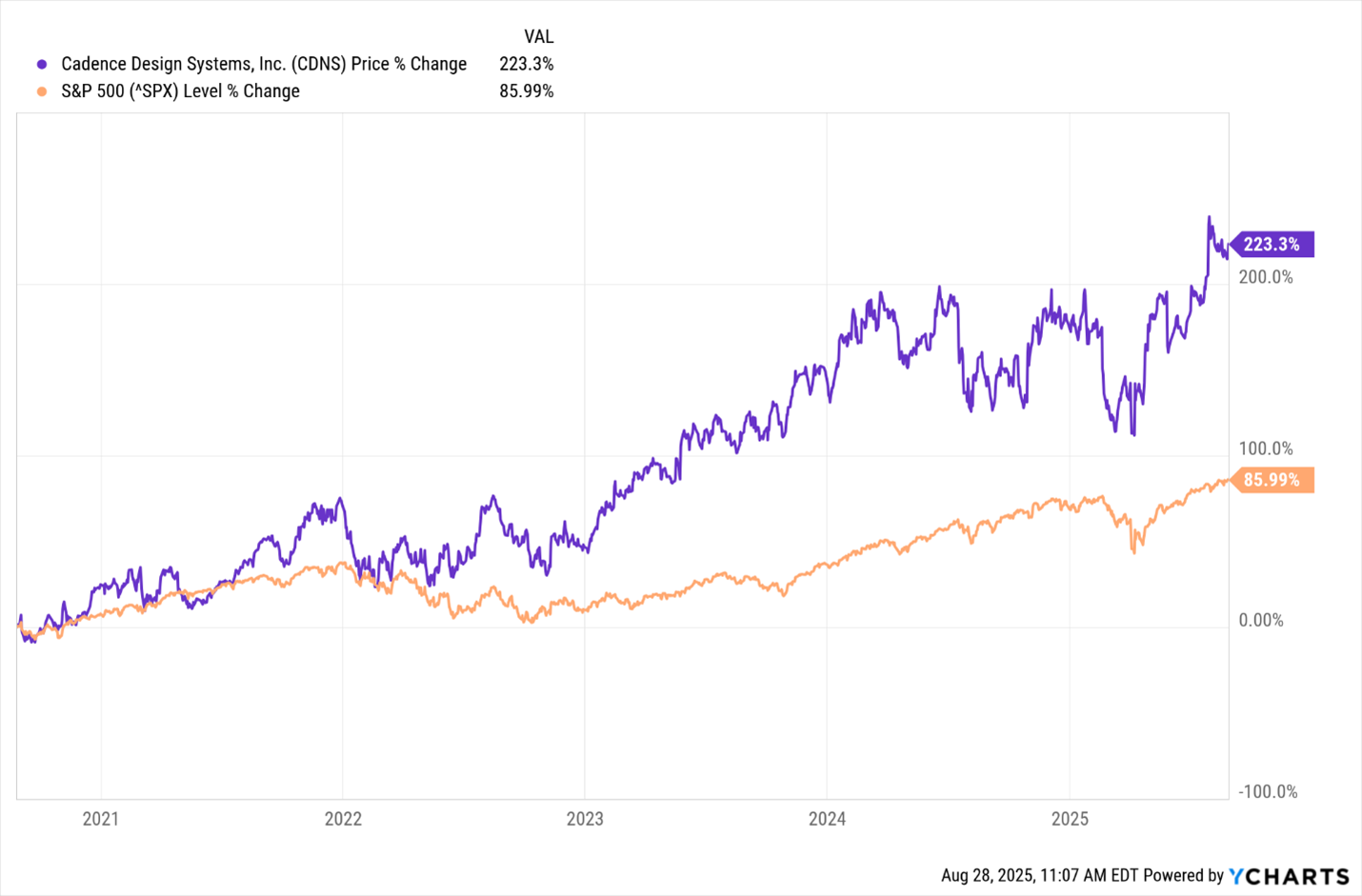 |
| By Michael A. Robinson |
For today’s tech investing chat, consider the iPhone and the ant.
At first, they might seem to have little in common.
But both are symbols of what is shaping up to be the biggest tug of war in the history of tech.
On one side, the iPhone represents the staggering leap of U.S. innovation.
It would take up to 200,000 iPhones to equal the compute power of the latest American AI chip.
That chip defines “force multiplier.” More on that in a moment.
First let me introduce what’s happening with our biggest trade frenemy.
That’s where the ant comes in.
It’s a symbol of China’s swarm strategy.
The idea is to use open-source AI code in a hive-like manner to create an AI sector that rivals ours.
And standing between them is Washington’s $500 billion Stargate plan to rule AI.
And I’ve uncovered a way to tap into Trump’s new China AI strategy.
Let me show you how this tech leader’s earnings are set to double in less than three years …
Here’s the Force Multiplier Chip
Now then, Trump’s latest move was a 15% levy on Nvidia’s exports to China.
But here’s the catch — Beijing still gets access to chips that are one or two generations behind the cutting edge.
Trump is betting that the U.S. lead is wide enough — and growing fast enough — that China can’t close the gap.
Central to that bet is Nvidia’s next-gen monster: The Blackwell GPU.
One chip delivers up to 20 petaFLOPS — the compute power of 100,000-200,000 iPhones.
Stack those iPhones one on top of the other, and you’d have to climb from the ground to the top of the Empire State Building to match just one of Nvidia next-gen chip.
That’s the force multiplier effect.

And it is the power behind America’s blueprint to dominate AI.
Trump’s banking on Nvidia getting to scale with Blackwell.
Consider that just 10,000 of those devices would equal the compute of roughly 2 billion iPhones.
And remember, last year alone, Nvidia sold 3.7 million AI/data center chips.
Even if China is “stuck” with older chips, that’s still billions flowing back into the U.S.
But Beijing isn’t sitting idle.
Its countermove is a hive strategy — using open-source AI code to build a huge AI sector by spreading the load across millions of endpoints.
It’s just like how a swarm of ants work.
A swarm of them can carry objects thousands of times heavier than any single ant could manage on its own.
It’s this simple.
China aims to overwhelm America’s lead in raw computing power by throwing millions of people at the challenge.
The Software Behind the Semis
Which brings us to Cadence Design Systems (CDNS).
Designing and deploying AI systems at this scale requires software blueprints, testing and validation every step of the way.
The companies that provide those tools aren’t just passengers on the AI train — they’re the engineers laying the track.
Cadence is the undisputed leader in a software field known as electronic design automation (EDA).
It’s the software and modeling used by chipmakers, car companies and data centers to design a wide range of chip-based products and systems.
Think of Cadence as an architect of the AI age.
While Nvidia sells the bricks, Cadence provides the blueprints and tools to make sure the building actually stands.
Based in San Jose, Cadence has been around since 1988 and has become the indispensable partner for the entire chip sector.
Its tools cut development time by thousands of work hours, saving companies millions in costs.
That’s especially important when designing chips out of exotic new materials.
We’re talking things like silicon carbide and synthetic diamonds that perform at peak efficiency under the extreme heat that AI throws off.
As chips get denser and hotter, novel materials are a great way to keep them cool enough to run AI workloads.
Cadence is the firm enabling that shift.
Talk about marquee clients.
They include Bosch, Broadcom, Nvidia, ON Semiconductor, Qualcomm, Samsung, Siemens, Texas Instruments and Toshiba, just to name a few.

The firm also provides an ecosystem of pre-built software that car makers can drop into their designs — everything from infotainment dashboards to advanced systems that aid drivers in a range of tasks.
A Foot in Both Camps
Here’s why Cadence is such a powerful AI play.
It doesn’t matter whether the winning model is America’s advanced processors that are force multipliers or China’s computing swarm that relies on millions of older chips.
Both sides still need Cadence.
The firm has deep roots in the U.S. ecosystem.
But it also has long-standing operations in China, where local chipmakers depend on its design software to compete.
In other words, Cadence benefits whether AI leadership comes from Blackwell-class superchips in America or from China’s sheer computing volume.
And the demand isn’t just theoretical.
As chips grow more complex, the development hours required to bring them to market can stretch into the thousands.
Cadence’s pre-built models and verification tools cut that time dramatically, saving clients millions while locking in sticky, recurring revenues.
Our timing is good.
In the latest quarter, per-share profits grew by 29, a 50% boost from the year-ago quarter.
If that rate holds, earnings will double in just 2.5 years.
Make no mistake. This is a market crusher.
Over the past five years, the stock has surged more than 223%.
That’s more than double the S&P 500’s 86% return over the period.
That makes Cadence a great long-term winner no matter how the AI race between the U.S. and China plays out.
Best,
Michael A. Robinson
P.S. On Tuesday, Dr. Martin Weiss will turn his attention to another huge race … the one going on in digital currencies.
I urge you to attend his special Emergency Crypto Briefing on Tuesday, Sept. 2.
There, you’ll learn about the billions of dollars moving OUT of Bitcoin … and where that money is headed.


